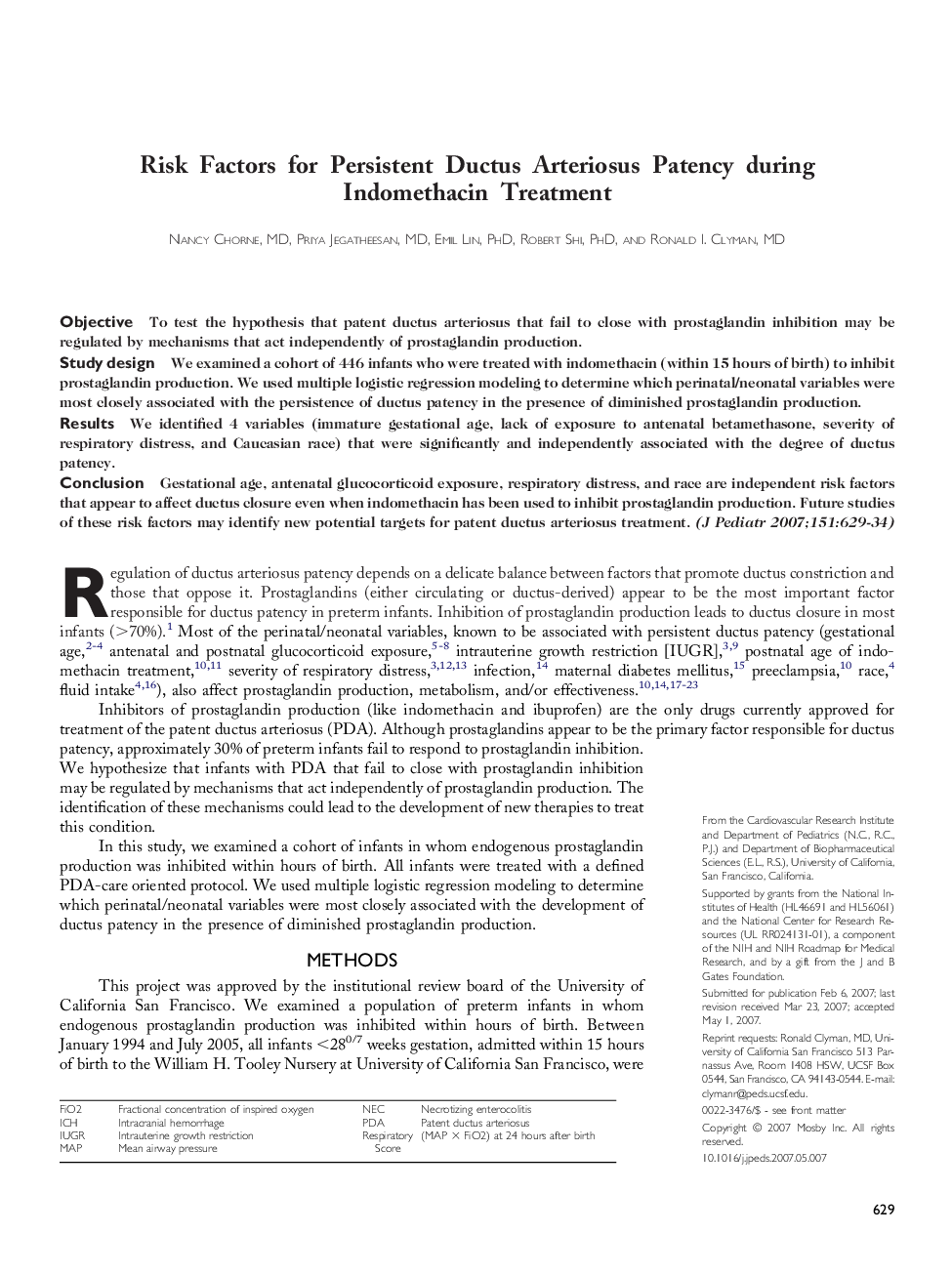| Article ID | Journal | Published Year | Pages | File Type |
|---|---|---|---|---|
| 4167581 | The Journal of Pediatrics | 2007 | 6 Pages |
ObjectiveTo test the hypothesis that patent ductus arteriosus that fail to close with prostaglandin inhibition may be regulated by mechanisms that act independently of prostaglandin production.Study designWe examined a cohort of 446 infants who were treated with indomethacin (within 15 hours of birth) to inhibit prostaglandin production. We used multiple logistic regression modeling to determine which perinatal/neonatal variables were most closely associated with the persistence of ductus patency in the presence of diminished prostaglandin production.ResultsWe identified 4 variables (immature gestational age, lack of exposure to antenatal betamethasone, severity of respiratory distress, and Caucasian race) that were significantly and independently associated with the degree of ductus patency.ConclusionGestational age, antenatal glucocorticoid exposure, respiratory distress, and race are independent risk factors that appear to affect ductus closure even when indomethacin has been used to inhibit prostaglandin production. Future studies of these risk factors may identify new potential targets for patent ductus arteriosus treatment.
